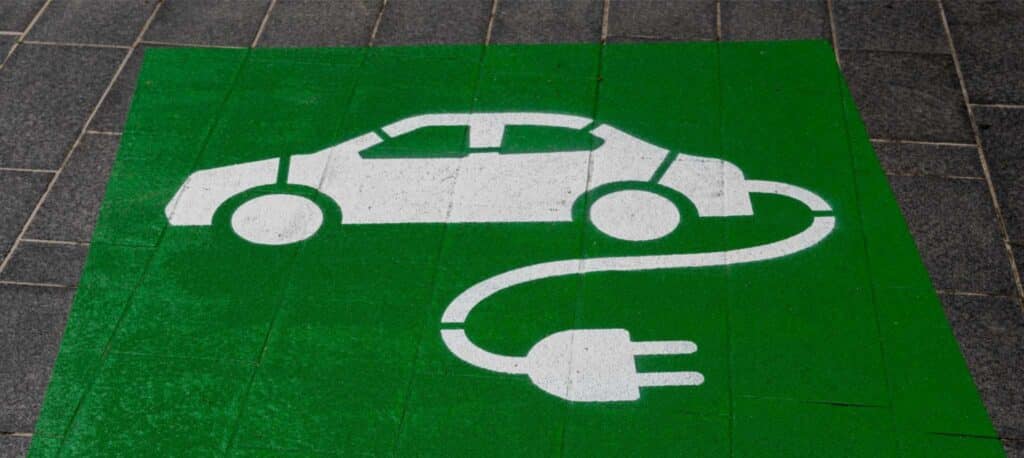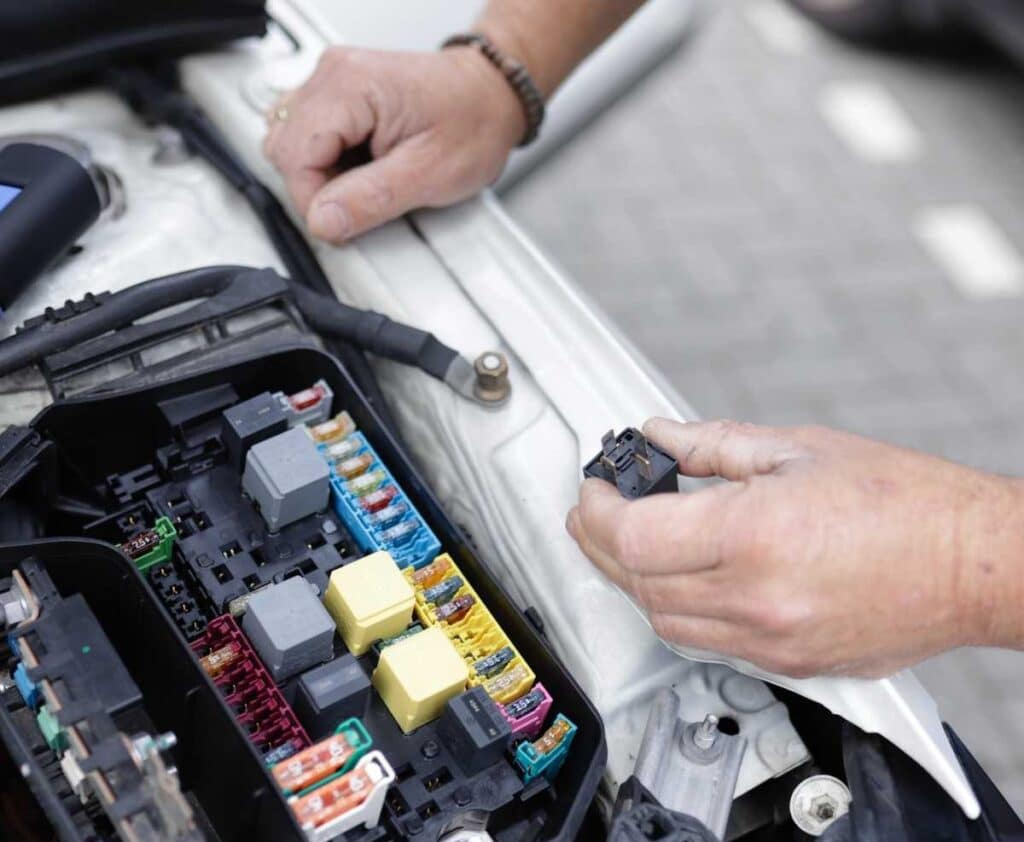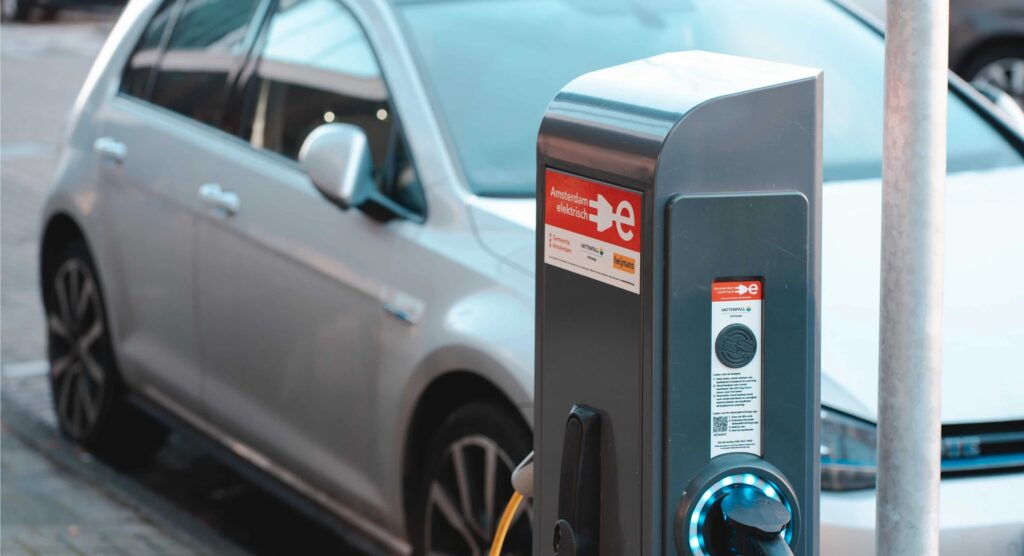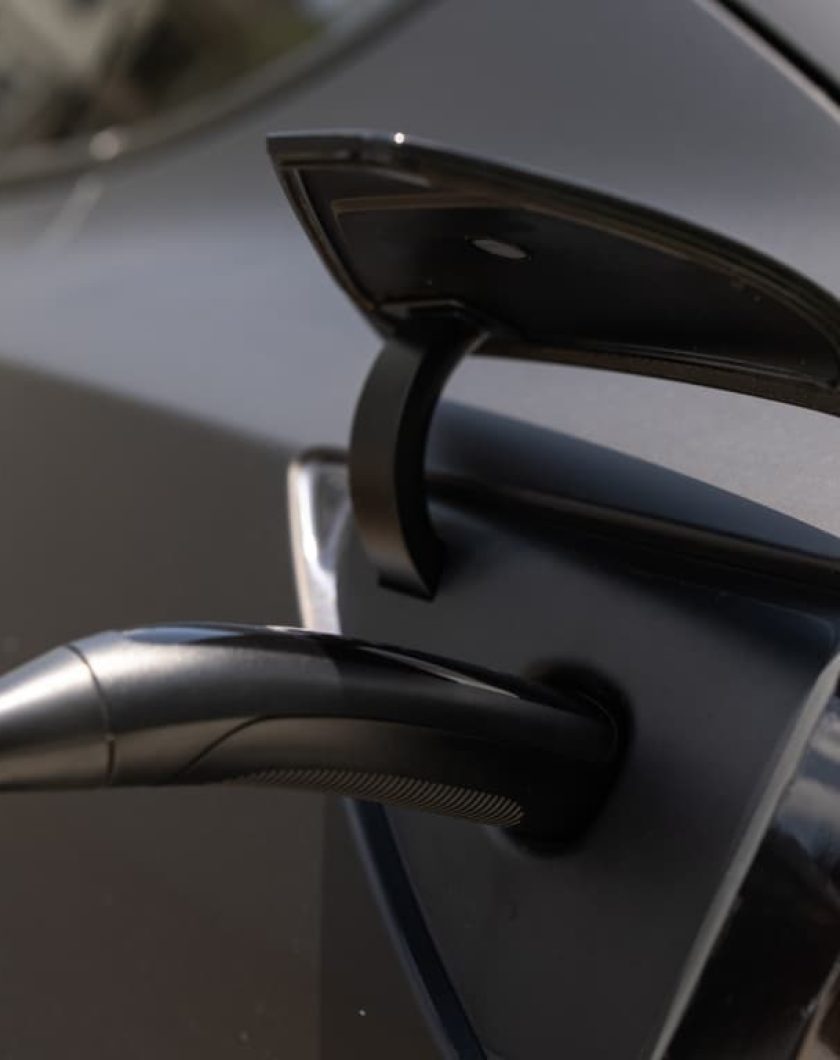
Background
Back in 2017 the UK government set its stall to combat air pollution by banning the sale of new combustion engine vehicles by 2035 to help achieve a target of net zero emissions by 2050. Initiatives such as London’s ultra-low emission zone (ULEZ) are pushing consumers and businesses alike to move to more emission friendly vehicles so it’s inevitable that within a generation all new cars will be electric.
EV adoption is rising at a fast pace. In September 2022 we saw Britain’s millionth plug in electric car registered with just under 250,000 EVs registered year to date(1). Recent data from the Office for National Statistics (ONS) also indicated that more than half of motorists aged 16-49 intend to switch to all electric vehicles within the next decade(2).
The market is growing. But what does this mean for body shops and insurers? How can they prepare for what will inevitably be a huge market in the next few years?
The differences in motor repair
The first element to understand is the difference between repairing an electric vehicle and a conventional ICE. We believe there are three main areas that make EV maintenance simpler and cheaper than ICEs.
1) Fewer Parts
2) Regenerative Braking
3) Cost Efficiency
Fewer Parts
Typical ICEs contain hundreds of working parts so there is plenty of opportunity for things to go wrong. EVs have far fewer parts and new analysis by Consumer Reports says that owners of plug-in electric vehicles are spending half as much on maintenance and repair over the life of the vehicle as owners of similar petrol and diesel versions.
“Electric vehicle owners don’t need a coupon to get half-off typical maintenance and repair costs from their dealer, it comes standard!” says senior transportation policy analyst Chris Harto, who authored the analysis based on Consumer Report data. “These savings are going a long way to offset the upfront costs for consumers.” However, it’s not just about the cost of repair – it’s also about how frequently the repairs are needed says Gabe Shenhar, associate director of CR’s Auto Test Center which specialises in electric vehicle testing – “Electrics just don’t need as much maintenance as gas-powered cars, and even though repairs won’t necessarily be less expensive, they are less frequently needed.”
Regenerative Braking
One of the main differences that EVs have over ICEs are their regenerative braking systems which uses the electric motor to slow the vehicle whilst putting some electricity back into the battery. This means that braking becomes more efficient, with less wear and tear. Whilst the disks and pads will still need to be maintained this will be done less often saving consumers money. Cost efficiency – or is there?
Research has shown that an electric car costs at least 30% less to service and maintain than its ICE counterpart(3). It’s only tyre wear and tear cost that remains comparable. However, the initial outlay for electric cars is undeniably expensive. The battery packs are so technologically advanced they cost thousands to produce albeit prices are slowly decreasing as economies of scale come into play with bigger adoption. Another thing to consider is that due to fewer moving parts in an electric car servicing may not be required. Tesla for example, don’t have a formal servicing schedule and simply recommend components like brakes and fluids should be topped up as required.
There is a counterargument to this. The Institute of the Motor Industry (IMI) has shown that some repairs come in at up to 400% higher for electric vehicles than their ICE counterparts(4). For example, a coolant pump repair for a BMWi3 costs just under £2,300 – that’s compared to £400 for the same part on a BMW series 3 petrol model. A door handle on a Tesla Model S is almost £670 as the retractable feature is controlled by an electric motor whilst a straightforward door handle on an Audi Q7 is about £245. There are also figures suggesting that the average repair costs for an ICE vehicle is £1,574, however the average EV repairs costs are £2,400(5). This can rise even further with higher value electric cars. Even windscreen replacements are not always straightforward as some models have screens that feature display technology. Repair shops also claim that because EV batteries need to be decommissioned to make the vehicle safe to work on, then recommissioned and when needed recharging, that, that can take around two hours of an engineer’s time. Additionally, whilst that vehicle is inactive it’s taking up space of ICE vehicles that need repairing. This extra time adds to the overall cost. Insurers need to understand the complexities, differentiate their approach and be more realistic about the cycle time with their customers. Analysing claims data is going to play an essential role in doing this.
Dealer or non-dealer?
It’s not just about parts. The Advance Driving Assistance System (ADAS) that you see on most cars needs resetting when interfere with the geometry of the car, for example when you change the suspension. The average cost for doing this is around £285 and often there are work-arounds.
The issue with EV is that they are more ADAS enabled, so if the battery is drained the vehicle needs resetting. There are limited experts in the non-dealer market who can do this so vehicles will need to be returned to dealers to make this happen. Resets at dealers cost more than a standard garage and insurers may not have preferential commercial agreements with those dealers. With some brands there may be no choice at all about going to the dealer as the vehicles warranty agreement may insist on it. Transporting the vehicle to and from the dealer increases cost and time which has further impact on the claims cycle. So, Insurers need to bring dealers into their supply chain and create commercial agreements with them. So, the market is out. It does initially cost more to purchase an electric car, and whilst some of the parts are more expensive than their ICE counterparts there should still ultimately be more financial benefits to owning an EV for customers.
But is it the same for insurers? Insurers will need to know the finite detail of labour and part costs for all EVs and balance that against less wear and tear and age of battery for example to be able to accurately price a policy if a vehicle is involved in an accident and needs repair.
Delays to repair as spare parts become hard to come by
In addition to the semiconductor shortages, lockdown measures over the last three years have reduced new vehicle production. This is proving problematic for insurers, as car owners have been holding onto their vehicles for longer. This in turn leads to less spare parts being available for repair. A January 2022 survey by the Motor Ombudsman found that 56% of garage workshops had suffered a lack of spare parts causing delays to repair.
There are a variety of reasons that have caused the current parts shortage crisis including:
- Import delays due to Brexit
- Reduced production due to the pandemic
- New car part production being prioritised over older vehicle parts production
- Labour shortages in transportation, due to both Covid and lack of drivers.
A survey by NBRA says that prior to the pandemic body shops could expect to get over 70% of parts within two days, that figure has now reduced to 50%(6). The survey also says that the new normal is to have up to a quarter of all jobs waiting over seven days for all parts to arrive and in 10% of cases some parts are being delayed for longer than two weeks.
The brand of EV also has an impact. There are the manufacturers such as Tesla and Polestar who are EV only manufacturers and there are the general manufacturers such as Kia, Nissan and Audi and who manufacture both ICEs and EV variants.
The challenges we have identified with EV-only manufacturers is that they are not prioritising after sales. As demand for EVs is so high, they are concentrating on production. Having said that, their ability to design and components in-house could give them an edge over legacy OEMs if they change their approach. Customers who have bought EVs from EV-only manufacturers are put into a difficult position as there isn’t a supply chain for parts. Insurers need to look at their underwriting and claims cycles.
General manufacturers who do both have somewhat of an advantage, for example parts such as headlamps on an ICE Corsa versus its EV counterpart there are no major differences.

Does the UK have the labour and skills capacity to deal with claims?
It appears the pace of electrification is getting ahead of the training and skills that are needed to match the demand. The Institute of the Motor Industry (IMI) recently revised its forecast for when the shortage of EV trained technicians will hit the after sales sector estimating that it would now come in 2027.
However, there is some positive news in that the number of technicians who are now qualified to work on EVs is estimated at 32,900, the equivalent of 15 per cent of technicians in the UK(7). This is up from five per cent back in December 2020.
However, if these numbers don’t increase in the imminent future the number of EVs will outweigh the number of qualified mechanics who can work on them. It’s estimated that the UK will need at least 75,000 EV trained technicians to meet the number of EVs that are expected to be sold in 2030(8).
The emergence of new engineering skillsets and capabilities needed for new automotive product introduction risks hindering the move to electrification according to Yvonne Paige-Stimson, Global Projects Director at Hexagon Manufacturing Intelligence8. This is coupled with a shortage of key engineering skills. In effect, cars are becoming computers, powered via electric and there’s a demand for a ‘parallel transformation the automotive engineering workforce, and a pressing requirement for new skills in software and battery engineering.’
Without doubt much needed investment is required to grow the technical talent that is required to repair both EVs and smart cars. The challenge comes from the fact that much of the legacy skill set is ICE based and there is a lag time within university and college degrees for those students wanting to start a career in the automotive sector25. As well as being a traditional mechanic, programming and software development skills are also needed.
The top drivers of the skills gap reported by employers include strong competition for skilled candidates, a shortage of applicants with appropriate qualifications, and a lack of awareness among young people of the educational routes into engineering occupations. But what about existing skilled mechanics? For the first time in years there are now more role vacancies than there is unemployment, so employees are cherry-picking roles based on pay, development, flexibility, and culture. To address the lack of technicians one UK insurer has developed their owned network of body shops for EV repairs alone.
According to the National Body Repair Association (NBRA) 6 skilled technicians are already leaving the industry at a rapid pace. This has been because of a variety of reasons including:
- Swapping to similar better-paid roles such as main dealers, used car refurb centres like Cazoo and Cinch, Lease car de-fleet centres, insurer owned body shops and to other repairers forced to play a part in a bidding war for talent
- Moving to better paid lower-skilled roles such as heating engineers or delivery
- Migrant workers (often Eastern European) have moved back home as their own economies have changed.
- Some staff, tired of the tough conditions and enormous pressure the industry requires, are leaving to retire early or move to lower-paid less taxing roles. This challenge has led to many auto organisations joining forces with the Health and Safety Executive Working Minds campaign to tackle work related stress.
The Institute of the Motor Industry (IMI) released an open letter claiming the UK “urgently” needs a “concerted, ongoing workforce development strategy” to ensure the planned sales boom in electrified cars isn’t met with a lack of people qualified to work on them(9).
What does this mean for body shops and insurers?
- Extended lead times whilst waiting for all the part to arrive reduces capacity in body shops and adds costs to insurance payments as customers need courtesy cars for longer.
- Cash flow and capacity are hit as parts are bought and paid before work can begin on the car.
- Should a customer cancel the repair, the parts are often past the 30-day point of return and refund.
In addition, body shops often have credit limits with their parts suppliers. The cost of parts has been steadily increasing due to the rise in raw material prices brought on by the shortages, the pandemic and the war in Ukraine. A report by AlixPartners says that raw material costs for electric vehicles more than doubled during the pandemic(10). When the cost of parts increase that means fewer parts can be purchased before reaching the limit meaning repair shops are using their cash reserves to pay.
Battery fire risks
We have heard some reports of repairers being reluctant to accept vehicles which have been involved in accidents due to perceived battery fire risks and the potential they may explode days after the accident
Fundamentally, electric vehicles are extremely safe, but there is the potential risk if the lithium-ion battery is damaged, which might happen if it is exposed to extreme heat or something penetrates the battery cell wall.

A geographic mix
Across the UK city councils are introducing low emission zone (LEZ) initiatives. London may well be the most well-known with its Low Emission Zone covering much of the capital and the Ultra-Low Emission Zone (ULEZ) with stricter regulations that cover the area up to the North and South Circular roads. Vehicles that don’t meet the standards need to pay a charge. Consultation is underway to expand ULEZ to the M25 in 2023. So, it’s understandable that EV adoption is high in London.
Glasgow city centre was the first region in Scotland to have a LEZ introduced. Bath launched a Clean Air Zone (CAZ) in 2021 for business-use vehicles and Birmingham took its CAZ even further as it will cover private vehicles and operate 24 hours a day, 365 days a year. Manchester, Aberdeen, Dundee, Edinburgh, Newcastle, and Sheffield are the latest cities to propose their own initiatives in the forthcoming months.
With these initiatives sales are increasing across the UK but there is a divide. A third of all EV registrations are in the South East and London (accounting for a 36 per cent share) while the share in the north east accounts for just 2.70 per cent of EV sales(11). There are a variety of reasons for this divide with many motorists in the north citing range anxiety and a lack of infrastructure as reasons for not wanting to make the shift. The data from the RAC also suggests the figures correlate to wealth as the more affluent south east and those from the capital are more likely to be able to afford the initial expensive outlay of purchasing an electric vehicle.
In Summary
- Typically, consumers should find that there will be less maintenance required for their EV in comparison to an ICE however, the downtime at repairers will be longer which could increase costs for body shops and insurers. Both will need to learn the finite detail of labour and parts costs for all EVs to accurately price a policy.
- Spare parts are still hard to come by as the industry recovers from post-pandemic delays. EV-only manufacturers are less likely to have spare parts as they concentrate on new sales.
- Despite growing numbers of skilled EV technicians there is concern from the industry that the numbers are not rising quickly enough to meet the demand for the vehicles themselves. Many skilled technicians are also continuing to leave the industry at a rapid pace.
- Despite rising registrations there is a growing north south divide with the more affluent and built up south east and London regions being more willing to adopt EVs.
The Procurato Way
We are experts in our field.
Procurato consultants have over 30 years’ experience of managing emerging trends like these and we are currently helping several clients to improve their supply chain. Speak to us to help you establish just how of an issue this is going to be for you and how to fix it.
We understand this market in detail
We have access to unparalleled data and insights from across the whole market meaning we can help you to quickly understand where you benchmark in the sector and provide recommendations to improve.
Our solutions are practical
We can help contractually, operationally, and strategically to guide your thinking through what steps need to be taken and we can help you to execute those plans quickly if you need that support too.
For more information please contact:
References
6 https://www.nbra.org.uk/repairer-market-comment-january-2022/
7 https://www.am-online.com/news/aftersales/2022/09/15/ev-skills-shortage-could-hit-by-2027-warns-imi
9 https://www.autocar.co.uk/car-news/industry-news/call-uk-address-ev-skills-shortage-2030
10 https://www.cnbc.com/2022/06/22/electric-vehicle-raw-material-costs-doubled-during-pandemic.html








